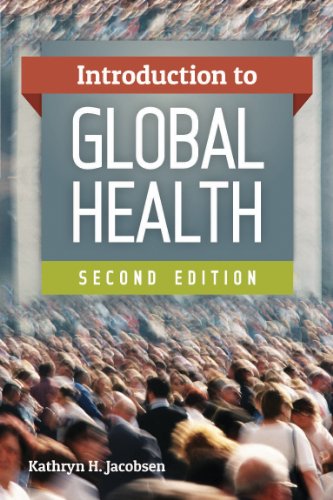Description
Introduction To Global Health 2nd Edition Jacobsen – Test Bank
Multiple Choice
1. What is the World Health Organization’s definition of health?
A. “Health is a state of complete physical wellbeing and not merely the absence of disease or infirmity.”
B. “Health is a state of complete physical and mental well-being.”
C. “Health is a state of complete physical and mental well-being and not merely the absence of disease or infirmity.”
D. “Health is a state of complete physical, mental, and social wellbeing and not merely the absence of disease or infirmity.”
Ans: D
Page: 2
2. Which is not an essential public health service?
A. Enforce laws and regulations that protect health and ensure safety.
B. Inform, educate, and empower people about health issues.
C. Monitor health status to identify community problems.
D. Research for new insights and innovative solutions to health problems.
E. All of the above are examples of essential public health services.
Ans: E
Page: 3
3. In 1900, what was the most common cause of death in the United States?
A. Cancer
B. Diarrhea
C. Heart disease
D. Pneumonia / influenza
E. Yellow fever
Ans: D
Page: 5
4. What is the most common cause of death in the United States today?
A. Cancer
B. Heart disease
C. Influenza
D. Road traffic accidents
E. Stroke
Ans: B
Page: 5
5. Which type of population is most likely to have a high fertility rate, high mortality rate, and short life expectancy?
A. High income area
B. Middle income area
C. Low income area
Ans: C
Page: 5
6. Which type of population is most likely to have a low fertility rate, low mortality rate, and long life expectancy?
A. High income area
B. Middle income area
C. Low income area
Ans: A
Page: 5
7. Which term describes a shift toward lower birth and death rates that occurs as populations experience economic development?
A. Demographic transition
B. Epidemiologic transition
C. Nutrition transition
D. Socioeconomic transition
Ans: A
Page: 6
8. What stage of the demographic transition is characterized by a decreasing death rate, a high birth rate, and an increasing population size?
A. Pre-transition
B. Early transition
C. Late transition
D. Post-transition
Ans: B
Page: 6
9. Which of the following statements is not true?
A. Low-income populations tend to have a higher proportion of deaths from infection than NCDs
B. Lower middle-income populations tend to have a higher proportion of deaths from injuries than infections.
C. Upper middle-income populations tend to have a higher proportion of deaths from NCDs than infections
D. High-income populations tend to have a higher proportion of deaths from NCDs than infections
Ans: B
Page: 7
10. Which is not an example of a modifiable risk factor?
A. Age
B. Exercise habits
C. Household income
D. Tobacco use
Ans: A
Page: 10




Be the first to review “Introduction To Global Health 2nd Edition Jacobsen – Test Bank”